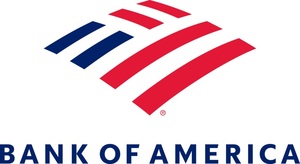"Our 2024 study reveals a common thread among high-net-worth individuals: a strong desire to make a positive change with lasting impact," said Jennifer Chandler, Head of Philanthropic Solutions at Bank of America Private Bank. "However, responses also make it clear that there's more than one way to achieve that goal. Generational and gender experiences shape worldviews and values, influencing cause selection and how people give."
Differences in Age: Philanthropy is a way to impact the future, but what that impact looks like varies by age.
- When asked about their reasons for giving, all generations are motivated by making a lasting impact (69% older vs. 63% younger). However, older respondents are more than twice as likely to be driven by a sense of obligation (56% older vs. 25% younger).
- Younger donors give to causes related to homelessness (41% younger vs. 21% older), human rights/social justice (33% vs. 18%), climate change/environment (32% vs. 17%) and the advancement of women and girls (21% vs. 15%).
- Older donors tend to prioritize giving to religious organizations (41% older vs. 18% younger), animal welfare (32% vs. 25%), military (24% vs. 15%) and cultural/artistic conservation and creation (22% vs. 12%).
- As many are inheritors of wealth, younger donors surveyed are more likely to use giving vehicles, including charitable trusts (36% younger vs. 7% older), family foundations (25% vs. 3%) and donor advised funds (22% vs. 8%).
- Younger donors are more likely than older donors to gauge the success of their philanthropic efforts by public recognition (27% younger vs. 8% older). Additionally, 42% of younger donors say they are likely to associate their names with philanthropic efforts, while 69% of older donors give anonymously.
The Gender Divide: Just as age factors into one's philanthropic preferences and involvement, so too does gender.
- Men are twice as likely to become involved in philanthropy because of their spouse/partner's ideas (16% men vs. 8% women).
- Men are slightly more likely to give to causes related to hunger and poverty (45% men vs. 40% women). Women are significantly more likely than men (23% women vs. 12% men) to direct their support toward causes supporting the advancement of women and girls.
- Women shoulder the responsibility of introducing their children to philanthropy. When asked who is more likely to teach or talk to their children about participating in philanthropy, 46% of women point to themselves, while only 35% of men say the same.
Passing the Baton: Intergenerational skepticism surrounds philanthropic effectiveness.
- The vast majority of younger donors (88%) feel their generation is prepared to assume philanthropic leadership, and 86% believe the next generation will surpass the effectiveness of previous generations.
- However, only 50% of the older generation think the next generation is prepared to take on and support philanthropic causes.
- Many younger donors say they take a different approach to philanthropy (80%) than the previous generation but share their parents' commitment to giving back (88%).
- Older donors' responses show the inverse: They perceive their children to share their philanthropic approach (67%) but demonstrate lower levels of commitment (73%).
2024 Bank of America Private Bank Study of Wealthy Americans Methodology
Escalent, an independent market research company, conducted an online survey on behalf of Bank of America Private Bank. The survey consisted of 1,007 high-net-worth (HNW) respondents throughout the U.S. Respondents in the study were at least 21 years of age with at least $3 million in investable assets, excluding primary residence. The margin of error is +/- 3, reported at a 95% confidence level. The respondents are a nationally representative sample of the U.S. high-net-worth population and not necessarily clients of Bank of America or its wealth and investment management businesses.
Bank of America
Bank of America is one of the world's leading financial institutions, serving individual consumers, small and middle-market businesses and large corporations with a full range of banking, investing, asset management and other financial and risk management products and services. The company provides unmatched convenience in the United States, serving approximately 69 million consumer and small business clients with approximately 3,800 retail financial centers, approximately 15,000 ATMs (automated teller machines) and award-winning digital banking with approximately 58 million verified digital users. Bank of America is a global leader in wealth management, corporate and investment banking and trading across a broad range of asset classes, serving corporations, governments, institutions and individuals around the world. Bank of America offers industry-leading support to approximately 4 million small business households through a suite of innovative, easy-to-use online products and services. The company serves clients through operations across the United States, its territories and more than 35 countries. Bank of America Corporation stock is listed on the New York Stock Exchange (NYSE: BAC).
Banking products are provided by Bank of America, N.A., and affiliated banks, Members FDIC and wholly owned subsidiaries of Bank of America Corporation.
Investment products:
Are Not FDIC Insured |
Are Not Bank Guaranteed |
May Lose Value |
For more Bank of America news, including dividend announcements and other important information, visit the Bank of America newsroom and register for news email alerts.
Reporters may contact:
Julia Ehrenfeld, Bank of America
Phone: 1.646.855.3267
[email protected]
SOURCE Bank of America Corporation






Share this article